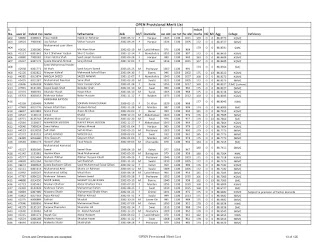chap.6 Fluid mechanics MCQs with solution
Fluid
mechanics
|
1)
|
The
study of properties of fluids in motion is called a) Fluid b) Fluid statics c) Fluid dynamics d) None |
C |
|
|
2)
|
The
dimensions of coefficient of viscosity
are. a) ML1T-1 b) M2L1T1 c) M L-1T-1 d) M2 L-1T-1 |
C |
|
|
3)
|
𝜂 Is denoted for coefficient of: a) Friction b) Viscosity c) Linear expansion d) Gravitational
customer |
B |
|
|
4)
|
The
SI unit of coefficient of viscosity is: a) 𝑘𝑔 𝑚−1
𝑠 −1 b) 𝑘𝑔 𝑚−2 𝑠 −1 c) 𝑘𝑔 𝑚−2 𝑠 −2 d) 𝑘𝑔 𝑚2 𝑠 |
A |
|
|
5)
|
An
object moving through a fluid experience
a retarding force called a) Drag force b) Gravitational
force c) Terminating force d) Frictional
force |
a |
|
|
6)
|
The
maximum constant velocity of an object
falling
vertically downward is called: a) Final velocity b) Terminal
velocity c) Initial velocity d) None of these |
B |
|
|
7)
|
The
drag force increases as the speed of the
object a) Increases b) Decreases c) Remain constant d) None of these |
A |
|
|
8)
|
The
equation 𝐹 = 6𝜋𝜂𝑟𝑣
is called: a) Newton’s law b) Stoke’s law c) Ohm’s law d) Lenz’s law |
B |
|
|
9)
|
Stokes
law is applicable if body has
__________ shape. a) Rough b) Square c) Circular d) Spherical |
D |
|
|
10) |
The
drag force F on a sphere of radius r
moving slowly with speed v through a fluid of viscosity 𝜂 is a) 6𝜋𝜂 𝑟2 𝑣 b) 6𝜋𝜂 𝑟 𝑣 c) 6𝜋 2 𝜂 𝑟 𝑣 d) 6𝜋𝜂 𝑟 𝑣 2 |
B |
|
|
11) |
Drag
force is given by a) Newton’s law b) Pascal’s law c) Gauss’s law d) Stoke’s law |
D |
|
|
12) |
When
weight of an object falling freely
becomes equal to the drag force, then the body will move with a) Increasing speed b) Decreasing
speed c) Constant speed d) None of them |
C |
|
|
13) |
When
the body reaches its terminal velocity,
the acceleration of the body becomes a) Maximum speed b) Minimum
speed c) Zero d) Constant
quantity |
c |
|
|
14) |
As
the water falls from tap, its speed
increases
and cross sectional area: a) Zero b) Increases c) Decreases d) Remains
constant |
C |
|
|
15) |
If
radius of droplet becomes half then its
terminal
velocity will be a) Half b) Double c) One forth d) Four times |
C |
|
|
16) |
Turbulent
flow is: a)Unsteady
and regular b)Steady
and regular c)Unsteady
and irregular d)Steady
and regular |
C |
|
|
17) |
The
flow of ideal fluid is always: a…Turbulent b)Streamline c)Irregular d)Straight line |
B |
|
|
18) |
Irregular
flow of fluid is called: a)Streamline b)Turbulent c)Uniform d)Laminar |
B |
|
|
19) |
According
to equation of continuity, A1V1 =
A2V2 = constant. The constant is equal to: a)Flow
rate b)Volume of fluid c)Mass
of fluid d)Density
of fluid |
A |
|
|
20) |
Equation
of continuity is obtained by
applying law of conservation of a) Mass b) Energy c) Momentum d) All |
A |
|
|
21) |
If
cross-sectional area of pipe decreases, the
speed of fluid must increase
according to: a)Venturi
relation b)Bernoulli’s
equation c)Equation
of continuity d)Torricelli’s
theorem |
c |
|
|
22) |
In
equation of continuity, the units of Av is given as: a)Cubic
meter b)Cubic
meter per second c)Square
meter per second d)Square
meter |
B |
|
|
23) |
The
law of conservation of mass gives: a) Bernoulli’s equation b) Equation of continuity c) Torricelli theorem d) None of these |
B |
|
|
24) |
Bernoulli’s
theorem applies to: a)Solids b)Plasma state c)Fluids d)Liquids |
C |
|
|
25) |
Velocity
of fluid increases where the
pressure is: a)Low b)High c)Constant d)Changes
continuously |
A |
|
|
26) |
Speed
of efflux can be determined by
applying: a)Pressure-velocity
relationship b)Torricelli’s
theorem c)Venture
relation d)All |
B |
|
|
27) |
Venturi
meter is a device used to measure: a) Pressure of the fluid b) Speed of fluid c) Density of fluid d) Viscosity of the fluid |
B |
|
|
28) |
A
man standing near a fast moving train
may fall. a) Away from the train b) Towards the train c) On himself d) None of these |
B |
|
|
29) |
Bernoulli’s
equation is obtained by applying
law of
conservation of. a) Mass b) Energy c) Momentum d) Fluid |
b |
|
|
30) |
Ideal
fluid is. a) Non-viscous b) Incompressible c) Steady flow d) Possess all properties |
D |
|
|
31) |
Velocity
of efflux is measured by relation b)
c) |
C |
|








Comments
Post a Comment